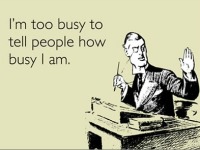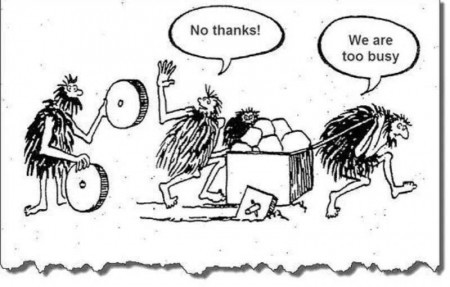How Not to Be Too Busy for Your Own Good

You’ve likely heard some version of this conventional wisdom about business success: If you work longer, push harder and give more, then you might break through.
But you’ve also likely pondered the problem: How can you break through when you’ve pushed yourself to the breaking point?
I believe it is time for busy entrepreneurs, managers and leaders to take off their superhero capes once and for all; the superhuman notion of getting more and better work done with fewer resources is a profoundly damaging myth whose time has passed.
The reason is the destructive pattern that stems directly from the myth and affects the vast majority of entrepreneurs, managers and leaders. The conditions for this pattern are present in stressful times and get triggered at that precarious point where your demands and responsibilities increase, while the resources you have available to meet them do not.
The problem with this inverse equation is that when demands outpace the resources you have available, you end up negotiating with yourself about which fire of the day you will put out while painfully neglecting the others. I call this set of imperfect choices the manager’s dilemma because it is truly a no-win situation without an obvious solution.
To assess your own risk level for the dilemma, answer these three questions:
Have the demands on you increased over the past several months?
Are they likely to stay elevated and/or continue rising?
If your demands have increased, have you gained enough additional time, energy, resources and focus to adequately address them?
You’re tilting toward the danger zone if you answered “yes,” “yes” and “no” to these questions — describing a sequence that reflects the underlying dynamic of the inverse equation.
If you are still unsure, listen to the way you talk about your own work. The first sign that the manager’s dilemma is settling into your world is the emergence of paradoxical statements like these:
“I can’t afford to relax and recharge because things are too busy right now.”
“I’m drained, but I have to set an example of perseverance for the team.”
“With so many deadlines and demands, some priorities will just have to be sacrificed.”
“It’s too crazy now; I’ll focus better once things settle down.”
From the outside looking in, you can see how backward statements like these actually are. If a friend said something like this to you, it would be easy to point out the flaw in his or her logic and explain how the undoubtedly counterproductive behaviors these attitudes reflect can leave a person more and more deeply entrenched in the dilemma. However, with our own situations, we’re too close and tangled up to maintain such objectivity.
And with that kind of loss of objectivity comes the loss of sound judgment.
Wendell Berry, the prolific writer and social critic, once said: “If one’s judgment is unsound, their expert advice is of little use.” And that makes sense: Whether you’re influencing people, projects or strategic priorities, the moment you lose your judgment is the moment your contribution starts to decline.
One such example is the capacity to make decisive choices. When there is too much to do and not enough time, energy, resources and focus to cope, a swinging pendulum of “indecision” and “reaction” often takes hold. On the one hand, we make rash choices out of desperation; on the other, we avoid decisions because of fatigue, uncertainty or just a feeling of being overwhelmed.
The problem with the pattern of indecision is that it can lead to a “treadmill” effect where priorities are pursued, then derailed by avoidance or distraction, then pursued again even as time, energy and resources are slowly drained by each successive (but incomplete) effort to move forward.
The best way to break the cycle? Identify the category of indecision that’s you; understand why you’re doing it; then simply stop. Here are four common types:
1. The escape hatch.
You decide on a course of action with an obvious “out” to avoid follow-through. It’s the best of both worlds; we do it and don’t have to do it all at the same time.
2. The treadmill.
A never-ending cycle of deciding, but never fully deciding. We never have to commit, and we get to sidestep the guilt of “avoiding” the issue.
3. The stall.
We find a shelf and stick all of the possible choices on top, out of reach. We get to look at our options from afar, separating ourselves from the pressure
4. The blinders.
Brazen and bold, this category involves deciding not to decide, knowing full well what’s at stake. We trigger ourselves into a kind of survival mode that justifies avoidance
To avoid “indecision” traps like these, we have to understand and embrace our dilemma. If we do, we’ll be able to spot the unhelpful assumptions and self-defeating habits that keep it in place.
The takeaway here is that if you can’t afford to relax and recharge because things are too busy, then you know you must make the time. And if some priorities have to be sacrificed because you are overwhelmed by too many deadlines and demands, then you know you have to redefine what truly matters and commit to that.
If you cannot make these changes, you just might be too busy for your own good.



Comment (0)